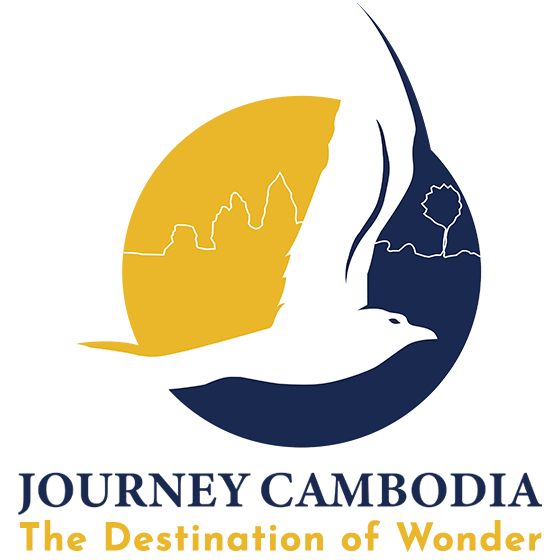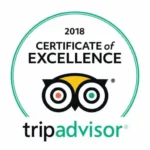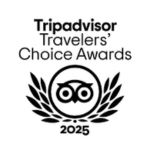Tonle Sap Tour from Siem Reap – The Best Times and Must-See Sights for an Unforgettable Adventure
Have you ever seen a lake that breathes? On Cambodia’s Tonle Sap Lake, water flows both ways – a natural phenomenon that shapes life for thousands of fishing families. This massive body of water grows up to six times its dry-season size, creating one of Southeast Asia’s most remarkable ecosystems. The floating villages here don’t just adapt to the water – they live in perfect sync with its rhythms.
You’ll find more than just a boat ride here. When the monsoon pushes water up the Tonle Sap River, the lake transforms into a vast inland sea. Fish swim through treetops, and boats glide past the crowns of submerged forests. Each season brings its own display of life on the water.
Related Experiences You Might Enjoy:
- Experience sunrise at Angkor Wat followed by temple exploration
- Visit the intricate Banteay Srei temple and Grand Circuit
- Connect with local life in the Cambodian countryside
Editor’s Note: This guide was updated in October 2024 based on our team’s latest visits to Tonle Sap Lake and its floating villages. Our local guides continue to monitor changes in water levels, village access, and tour conditions to provide the most current information.
Quick Answers for Your Visit:
- Best time to visit: July to February, when water levels are high enough for easy village access
- Tour duration: Most tours run 4-6 hours, including travel time from Siem Reap
- What to bring: Sun protection, camera, light long-sleeve clothing, and cash for local purchases
- Recommended time of day: Early morning (7-11 AM) or late afternoon (3-6 PM) for cooler temperatures
- Best floating villages: Kampong Phluk for authentic local life, Chong Khneas for accessibility
Understanding the Lake’s Seasonal Changes
The Tonle Sap’s seasonal transformations affect your tour experience fundamentally. During the wet season (June-October), the lake swells dramatically as water reverses from the Mekong River. Houses that once stood on stilts now appear to float directly on the water’s surface. During dry months (November-May), these same buildings tower above the ground on wooden poles up to 30 feet high.
Seasonal Impact on Tours:
- Wet Season (June-October)
- Deeper waters allow access to flooded forests
- More active fishing scenes
- Cooler temperatures from water coverage
- Dry Season (November-May)
- Clear views of traditional stilt architecture
- Easier walking tours of village structures
- More intimate interactions with local communities
Floating Villages: Each With Its Own Character
The lake supports several floating communities, each offering distinct perspectives on water-based living.
Kampong Phluk This community stands out for its towering stilt houses and traditional fishing practices. Unlike more tourist-oriented villages, Kampong Phluk maintains its authentic daily rhythms. Fishermen cast nets in early morning light, while women sort the day’s catch or tend to floating gardens.
What Sets It Apart:
- Traditional stilt architecture rising 20-30 feet
- Active fishing community
- Mangrove forest exploration
- Limited tourist numbers
Mechrey Village Located west of Siem Reap, Mechrey offers close-up views of traditional fishing methods. The village moves with the seasons, adapting its location as water levels shift.
Notable Features:
- Smaller, more intimate setting
- Crocodile farming observations
- Floating gardens
- Local market interactions
Practical Tips for Your Visit
Time Management:
Morning Tours (Recommended)
– 7:00 AM: Departure from Siem Reap
– 8:00 AM: Village arrival
– 8:00-10:30 AM: Village exploration
– 11:30 AM: Return to Siem Reap
Afternoon Tours
– 2:00 PM: Departure
– 3:00-5:30 PM: Village visit
– 6:30 PM: Return
Essential Items:
- Sunscreen and hat
- Camera (waterproof if possible)
- Small bills for local purchases
- Refillable water bottle
- Light, long-sleeved clothing
Cultural Sensitivity and Local Interactions
When visiting these communities, remember you’re entering people’s homes. The floating villages aren’t exhibits – they’re living communities maintaining centuries-old traditions.
Photography Guidelines:
- Ask permission before photographing individuals
- Avoid using flash inside homes
- Focus on wide-angle community shots
- Share digital copies when possible
Environmental Considerations
The Tonle Sap ecosystem faces challenges from climate change and development. Your visit supports local communities while raising awareness about conservation needs.
Sustainable Tourism Practices:
- Use local guides who understand the ecosystem
- Support community-based tourism initiatives
- Minimize plastic waste during your visit
- Learn about local conservation efforts
Traditional Life on the Water: A Closer Look
The daily routines of floating village residents offer fascinating insights into water-based living. Each morning starts with the sound of boat engines as fishermen head out while the sky still holds its pink hue. Women prepare fishing nets, children paddle to floating schools, and the entire community moves in harmony with the water’s rhythms.
Daily Life Activities:
- Fish farming in netted enclosures
- Floating vegetable gardens
- Mobile markets on boats
- Water-based agriculture
- School routines
- Community gatherings
Unique Fishing Techniques
The Tonle Sap’s fishing methods reflect centuries of adaptation to the lake’s peculiar ecosystem. Local fishermen employ techniques passed down through generations.
Traditional Fishing Methods:
| Month | Rainfall | Temperature | Water Level |
|---|---|---|---|
| January | Low | Cool | Moderate |
| April | Low | Hot | Low |
| July | High | Warm | Rising |
| October | High | Warm | Highest |
Wildlife Spotting Opportunities
The lake serves as a crucial habitat for various species. Your tour might include sightings of:
- Water birds
- Spot-billed pelicans
- Painted storks
- Black-headed ibis
- Aquatic life
- Giant snakehead fish
- Siamese mud carp
- Freshwater prawns
- Reptiles
- Water snakes
- Monitor lizards
- Asian water dragons
Seasonal Food Specialties
Each season brings unique culinary experiences, with local restaurants and families preparing dishes based on the catch of the day.
Wet Season Specialties:
- Steamed fish amok
- Fresh prawn curry
- Water mimosa salad
- Lotus stem soup
Dry Season Offerings:
- Grilled snake fish
- Dried fish dishes
- Seasonal vegetable stir-fries
- Preserved fish paste
Photography Tips for Water-Based Tours
Capturing life on Tonle Sap requires specific techniques:
Camera Settings:
- Morning light (7-9 AM)
- ISO: 400-800
- Aperture: f/8-f/11
- Shutter speed: 1/250+
- Midday shots (10 AM-2 PM)
- ISO: 100-200
- Aperture: f/11-f/16
- Polarizing filter recommended
Supporting Local Communities
Your visit can positively impact local lives through:
Community Support Options:
- Purchasing local handicrafts
- Participating in community projects
- Supporting floating schools
- Using local guide services
- Buying local snacks and drinks
Combining Your Tour With Other Experiences
Many visitors pair their Tonle Sap tour with temple visits. A morning at Angkor Wat followed by an afternoon lake excursion provides contrasting views of Cambodian life.
The Angkor Wat Highlights and Sunrise Tour pairs naturally with an afternoon Tonle Sap excursion. This combination lets you experience both Cambodia’s architectural grandeur and its living water culture in a single day.
Ready To Experience The Floating Villages?
Contact Journey Cambodia to plan your Tonle Sap adventure:
Contact Details:
- Address: № 0306, Sala Kamreuk Village, Sangkat Sala Kamreuk, Siem Reap Cambodia
- Tel: +855 12 334 657
- Mobile: +855 12 334 657
- Email: info@journeycambodia.com
Our local experts know exactly when and where to visit for the most authentic floating village experience. Each tour includes:
- English-speaking guide
- Transportation from Siem Reap
- Boat rental
- Village access fees
- Cold water and refreshment towels
Your journey through these remarkable water communities awaits. Experience a way of life that’s existed for generations on Southeast Asia’s great lake.









